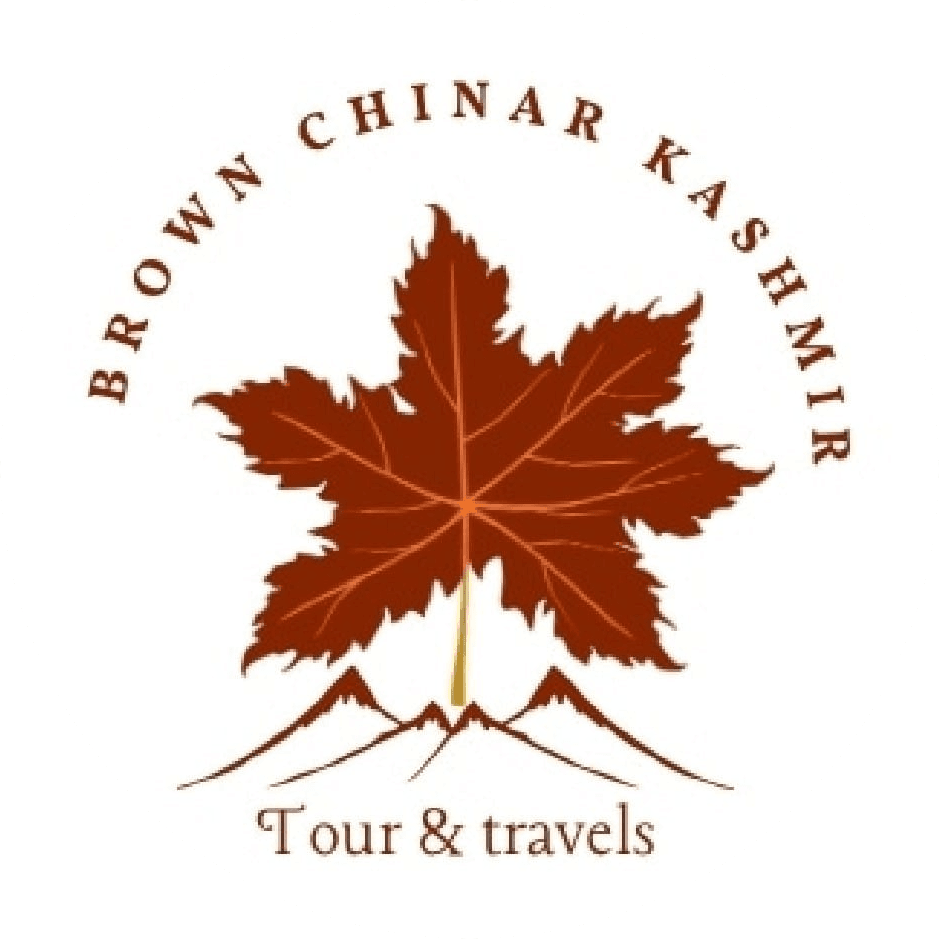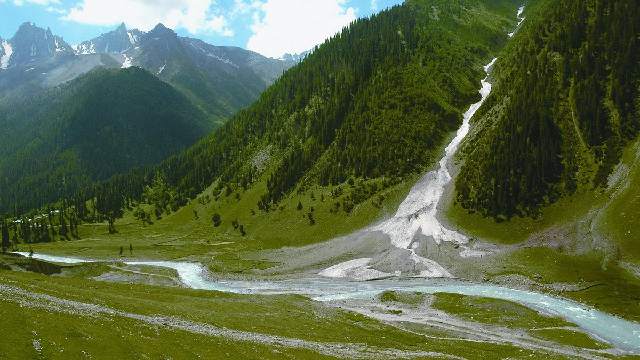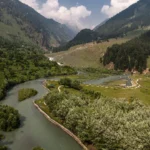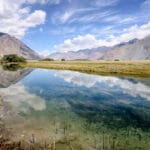Table of Contents
Toggle- Overview
- Geography and Climate Overview
- Best Time to Visit Ladakh
- How to Reach Ladakh
- Acclimatization in Ladakh: Why It’s Important
- Where to Stay in Ladakh: Accommodation Options
- Essential Packing List for Ladakh
- Top Places to Visit in Ladakh
- Adventure Activities in Ladakh
- Cultural Etiquette and Local Customs
- Best Travel Tips for Ladakh
- Conclusion
- How to book Ladakh tour online?
- People Also Ask
- What is the best time to visit Ladakh?
- How do I reach Ladakh by road?
- How can I reach Ladakh by air?
- Is it safe to visit Ladakh?
- How do I prepare for high-altitude sickness in Ladakh?
- Do I need a permit to visit Ladakh?
- What should I pack for a trip to Ladakh?
- Can I travel to Ladakh by bike?
- How do I get to Pangong Lake from Leh?
- How do I get to Nubra Valley from Leh?
- Is Ladakh a good place for trekking?
- What are the popular tourist attractions in Ladakh?
- Is Ladakh expensive to visit?
- How is the food in Ladakh?
- Can I visit Ladakh in winter?
- Are there any cultural etiquettes I should follow in Ladakh?
- What is the best way to travel around Ladakh?
- What are the challenges of traveling to Ladakh?
- Can I find ATMs in Ladakh?
- What is the Chadar Trek?
- Is Ladakh good for a honeymoon?
- How do I book permits for Ladakh?
- How long does it take to travel around Ladakh?
- Are there any safety concerns while traveling in Ladakh?
- What are the best adventure activities in Ladakh?
- Can I visit Ladakh on a budget?
- How can I rent a bike or car in Ladakh?
- What is the distance between Leh and Pangong Lake?
- Are there any guided tours in Ladakh?
- Can I find Wi-Fi in Ladakh?
- Inquiry Form
Overview
Ladakh lures adventurers and thrill-seekers, owing to its unmatched blend of rugged beauty and cultural extensity. This region is famously known as ‘The Land of High Passes’ – it is located between the mighty Himalayas and the Karakoram range, and has the highest motorable roads and unique Buddhist culture along with stunning monasteries, lakes, and crystal-clear waters.
Offering a mix of enviable spiritual landscapes along with adventure, Ladakh captivates every traveler, be it an adventure enthusiast, a culture lover, or a nature addict. In case you were wondering, just like every remote high-altitude destination, Ladakh has some unique prerequisites to make the visit truly unforgettable. From transportation and timing to culture – here’s an all you need to know guide on planning a visit to ladakh.
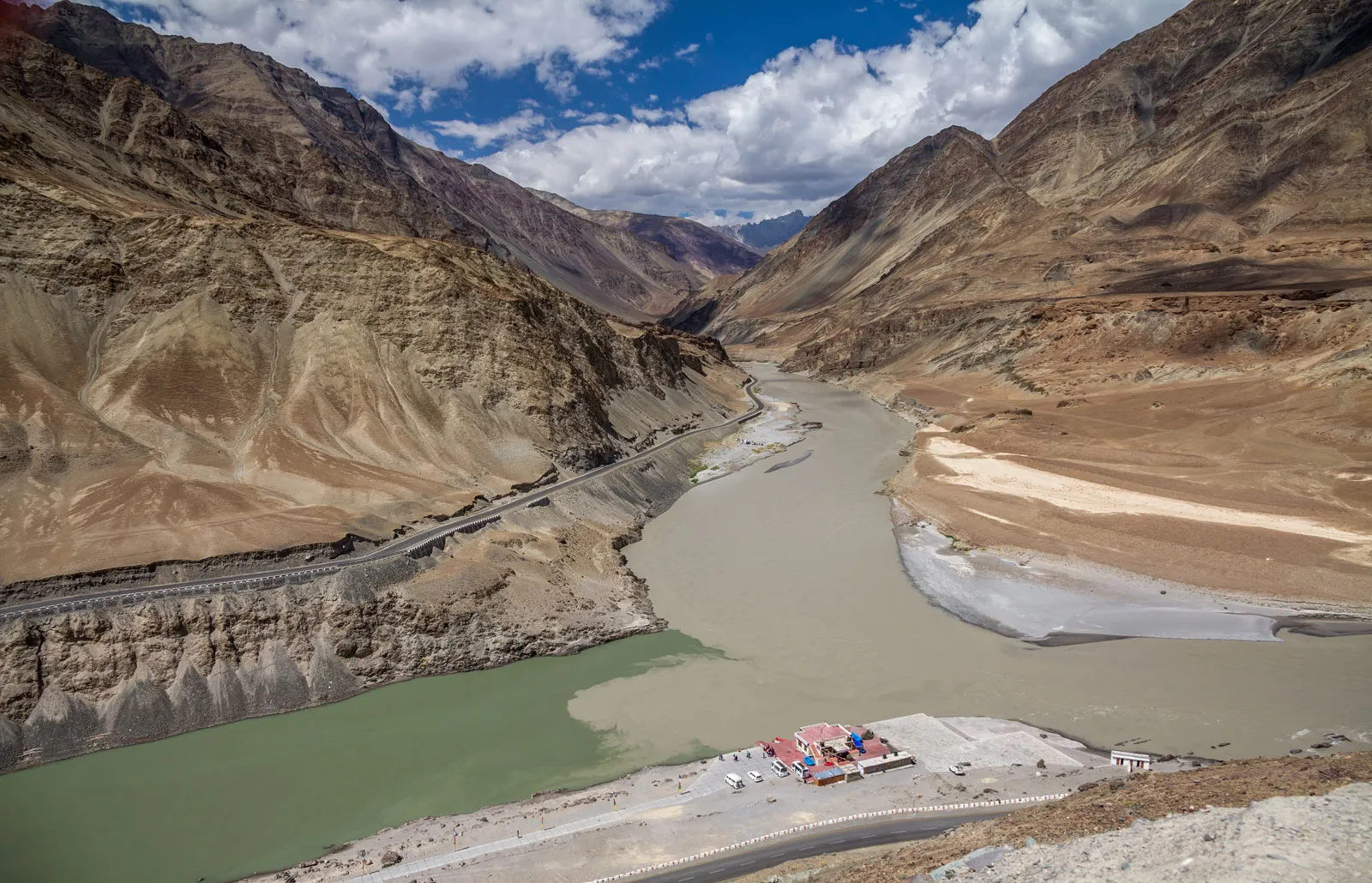
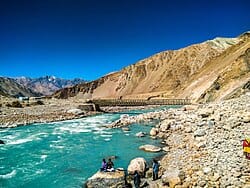

Geography and Climate Overview
Located in the northern part of the Indian subcontinent, Ladakh is surrounded by Tibet on the east, Pakistan to the west and Jammu and Kashmir in the south. The region is well-known for its high altitude sitting between nine thousand to twenty-five thousand feet above sea level. Divided into two regions – Leh and Kargil. The region has two prominent areas, with the administrative capital Leh being the most frequented.
Climate: The summer season is milder in temperature and range from 15°C to 30°C in winters and can go as low as 30°C. Ladakh does indeed have extreme climate conditions. The region however, does experience heavy snowfall during winters, summers from May to September are great for travelers.
Best Time to Visit Ladakh
Depending upon type of experience you are looking for, Best time to visit Ladakh can change. The region have different weathers in all seasons which are to be taken into account.
Summer (May to September): These months are peak tourist season for Ladakh. During this time the weather gets pleasant, Day time temperature is between 15°C to 30°C while nights are cool. Most of the tourist spots and remote regions of Nubra Valley, Pangong Lake and Tso Moriri Lake are accessible. Famous motorbike and cycle routes Manali-Leh Highway and Srinagar-Leh Highway are also open for tourists and it is the best time to trek, bike and explore the region.
Winter (October to April): Those who enjoy winter activities or look forward to some peaceful me-time should book their tickets to Ladakh in winter, it can be a magical experience at least once in a lifetime. The region sees heavy snowfall which changes the whole scene into a snow-capped wonderland, but do prepare yourself for extreme temperatures and isolation from certain remote areas. Ideal winters activities include the Chadar Trek (which involves trekking over the frozen Zanskar River), capture of winter sceneries, or simply indulging in some spiritualism at peaceful monasteries.
How to Reach Ladakh
There are three ways of reaching the Ladakh region; through air, bus or train. Below are the pros and cons of each option:
By Air
Kushok Bakula Rimpochee Airport in Leh serves as the main airport for Ladakh and is connected to other cities in India like Delhi, Mumbai, and Srinagar. It is the best and the most efficient option to fly into Ladakh especially when the summer months hit and numerous flights are available.
By Road
- Manali-Leh Highway (NH 3): This particular road trip is 479km long and is one of the most famous in India. The highway opens in June and closes in September during which it takes you through Himachal Pradesh and then the barren lands of Ladakh. It is also known for its mountainous regions like ‘Rohtang Pass’ and ‘Baralacha La.’
- Srinagar-Leh Highway: This stretch of road is open from May to October and is perceived as an easier drive compared to the ‘Manali-Leh Highway.’ This smoother 434km route passes through Kashmir Valley and other places like Sonamarg, Drass and Zoji La Pass.
By Rail
Ladakh doesn’t have any railroads, but the region’s closest railway station is Jammu. You can take a bus or taxi from Jammu to Ladakh which is approximately 700km away.
Acclimatization in Ladakh: Why It’s Important
One of the obstacles that travelers face when traveling to Ladakh is it’s high altitude due to the risk of altitude sickness. Adaption is very important if you want to travel to this region without facing health risks.
- Acclimatization: Rest for the first day or two in Leh and gradually increase activity with greater focus on movement. Make sure to drink plenty of fluids.
- Altitude Illness: Signs of altitude illness consist of feeling faint, weak or ill, having a headache or aching head and feeling extremely tired. These cases should be treated by a medical professional.
- Diamox: There are travelers who prefer to travel with Diamox, a prescription medicine aimed at preventing altitude sickness.
- Herbal tea, soup and even better water: Staying hydrated is crucial as the cold air of Ladakh makes it extremely easy to be dehydrated. Herbal tea, soup and water are good options for hydration.
Where to Stay in Ladakh: Accommodation Options
Regarding lodging, Ladakh does not fall short – there are options that are suitable considering individual’s preferences.
Mid-Range Hotels
- Hotel Monk: The Zen is highly regarded for having friendly staff as well as awe-inspiring views of the area, which is why it is considered to be a good mid-range hotel expenditure.
- Shambhala: Warm rooms makes casual climate in Shambhala comforting, which makes Shambhala a worthwhile quiet stay for attendees.
Guesthouses and Homestays
Embracing Ladakhi culture and consumer hospitality is best enjoyed by staying with local families. Guesthouses or Homestays are available in regions like Leh, Nubra Valley and elsewhere. These low-cost options provide personalized services alongside local cuisines.
Campsites
For adventure oriented folks, staying in luxurious tents in secluded locations such as Nubra Valley, Pangong Lake, and Tso Moriri Lake is something that one must undertake. These camps offer breathtaking views and proximity to nature.
Essential Packing List for Ladakh
Ladakh is known for its capricious weather which further complicates the packing due to drastic changes in temperature throughout the day. For packing, here is a detailed list:
Clothes
– Thermal wear: For colder regions, lightweight thermals are crucial for layering.
– Waterproof jackets and trousers: These are needed to guard against rain or wind, particularly for those at greater heights.
– Grouped fleece jackets: pack additional fleece jackets alongside windproof outer layers and woolen socks.
– Warm gloves, hats, and scarves: Cold months require the addition of a woolen cap and gloves.
Footwear:
– Sturdy trekking shoes: Walking or trekking on rough terrains requires comfortable and durable shoes which are essential.
– Sandals: Evening relaxation is best done with light sandals or flip flops.
Other Essentials
• Sunglasses: The intense sun and glare from snow or the desert makes sunglasses a must have.
• Power bank: In some locations, electricity is not readily available. For these situations, a power bank is needed to keep devices charged.
• Camera: The stunning landscapes, monasteries, and culture of Lassad are sights to behold and thus a camera is essential.
• Personal medication: Carry necessary medications including for sicknesses that are only required at higher altitudes.
Top Places to Visit in Ladakh
Ladakh is filled with fascinating places that offer a range of experiences from serene monasteries to picturesque lakes.
- Leh Palace: The historical landmark is well known for its panoramic view of the city.
- Shanti Stupa: Known as a white dome stupa for peace. It is also well known for its stunning valley views.
- Pangong Lake: A stunning high altitude lake situated at 14,270 feet above sea level, famed for its constantly changing colors and its features in Bollywood movies mostly in 3 idiots.
- Nubra Valley: Also referred as the “Valley of Flowers,” Nubra comes with camels, sand dunes, and ancient monasteries. It also has the Diskit Monastery.
- Tso Moriri Lake: Tso Moriri Lake is in Changthang region. It is remote and quiet with reeds and mountains surrounding it.
- Magnetic Hill: Vehicles appear to roll up and down without any mechanical force due to a weird illusion phenomenon Magnetic Hill. This is a must add to your list as a quirky attraction.
- Thiksey Monastary: As one of the largest in Ladakh scaling around the Indus Valley, Thiksey Monastery offers breathtaking views as it’s placed at the foothills.
- Zanskar Valley: Merging with the cold desert region, Zanskar is one of the most isolated places in Ladakh while also known for trekking. It is perfect for adventure lovers.
Adventure Activities in Ladakh
An adventure enthusiasts desire lands in Ladakh. Activities include:
Trekking
-If you’re looking into trekking, Ladakh offers a variety of places where you can do multi day styles of treks like Markha Valley Trek, Chadar, and Stok Kangri Trek.
Biking
– Riding a bicycle through the twisting roads of Ladakh at high altitudes is like nothing else. You can bike on popular routes like the Manali-Leh Highway and Srinagar-Leh Highway, or even off-road around the Nubra Valley.
Rafting
– The Zanskar River has some of the best rivers for white water rafting while the Indus River has calmer yet still exciting rapids for beginners.
Camel Safari
– Enjoy the breathtaking sand dunes of Nubra Valley by taking a Bactrian camel safari. The experience is one of a kind and provides knowledge on the rich history of the region and trade routes.
Cultural Etiquette and Local Customs
Ladakh has ancient roots, and preserving the rich culture by following the local etiquette is very important.
– Dress Modestly: While attending local villages or monasteries, you should put on modest cloths to respect the local ways.
– Photography: Always ask for permission first to capture photographs, especially in monasteries as well as with locals.
– Buddhist Monasteries: Monasteries are sacred spaces and Ladakh is primarily a buddhist region. So it is important to follow some etiquettes like taking off your footwear prior to entering the monastery and not showing the soles of your feet to statues or monks.
Best Travel Tips for Ladakh
- Travel Permits: Foreign nationals will need travel permits for certain areas like Nubra Valley, Pangong Lake, and Tso Moriri. These can be procured from a travel agency or at the commissioner’s office in Leh.
- Limited ATMs: ATMs can be scarce, especially in rural areas. Carry enough to last you for the trip, and be sure to withdraw money in Leh before heading out.
- Mobile Connectivity: Signal is poor in places such as Nubra Valley and Pangong Lake. However, BSNL and Airtel provide the most coverage.
Conclusion
Ladakh holds a distinctive position among Indian states and remains one of the most sought after travel locations in the world. Its rugged landscapes and breathtaking lakes are matched only by its rich spirituality and culture, providing something for any kind of traveler.
As long as you plan the trip well in advance and prepare for the altitude challenges, you are guaranteed an unforgettable journey in one of the most beautiful places on earth.
Ladakh offers a unique experience whether you decide to trek or ride on a bike, so get your gear ready. Make sure to check out the roof of the world and have an incredible time!
How to book Ladakh tour online?
Contact Brown Chinar at +91 6005039532/+91 9906188874 or Email us at : Enquiry@brownchinarkashmir.com
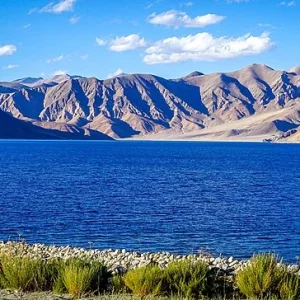
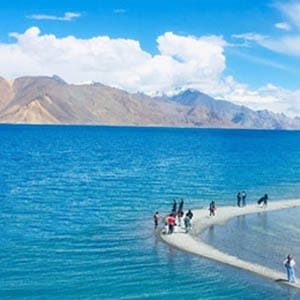
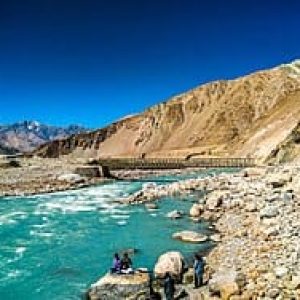
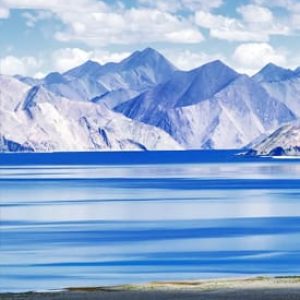
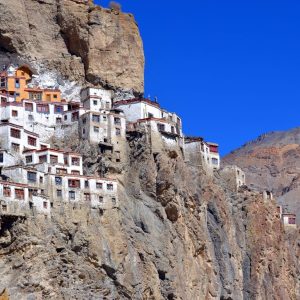
People Also Ask
What is the best time to visit Ladakh?
The best time to visit Ladakh is during the summer months, from May to September, when the weather is pleasant, and most tourist attractions and routes are open. For winter adventures, you can visit between October and April, though it will be colder, and some areas may be inaccessible.
How do I reach Ladakh by road?
Ladakh is accessible by two main road routes:
- The Manali-Leh Highway(open from June to September).
- The Srinagar-Leh Highway(open from May to October). Both routes offer scenic views and take you through high-altitude passes and remote regions.
How can I reach Ladakh by air?
You can fly to Leh via the Kushok Bakula Rimpochee Airport. Direct flights are available from cities like Delhi, Mumbai, and Srinagar, making it the easiest and quickest way to reach Ladakh.
Is it safe to visit Ladakh?
Yes, Ladakh is considered a safe destination for tourists. However, due to its high altitude, visitors should take proper precautions for acclimatization to avoid altitude sickness. Always follow local guidelines and respect the cultural practices of the region.
How do I prepare for high-altitude sickness in Ladakh?
To prevent altitude sickness, spend a day or two resting in Leh to acclimatize. Drink plenty of fluids, avoid alcohol and smoking, and consult a doctor about taking altitude sickness medications like Diamox.
Do I need a permit to visit Ladakh?
Yes, certain areas in Ladakh, like Nubra Valley, Pangong Lake, and Tso Moriri, require special permits for tourists. Foreign nationals and even Indian travelers may need to obtain permits. These can be arranged through a travel agent or the district commissioner’s office in Leh.
What should I pack for a trip to Ladakh?
Pack warm clothing (even in summer), sturdy trekking shoes, a waterproof jacket, sunscreen, sunglasses, and essential medications. Also, bring a power bank, a camera, and cash, as ATMs can be limited in remote areas.
Can I travel to Ladakh by bike?
Yes, traveling to Ladakh by bike is an incredibly popular activity. The Manali-Leh Highway and Srinagar-Leh Highway offer thrilling rides, with some of the world’s highest motorable passes. Make sure your bike is in good condition and you are prepared for the challenging roads.
How do I get to Pangong Lake from Leh?
Pangong Lake is located around 160 kilometers from Leh and can be reached by road via Nubra Valley. The journey takes about 4-5 hours and offers breathtaking views of the surrounding landscapes.
How do I get to Nubra Valley from Leh?
Nubra Valley is about 120 kilometers from Leh, and you can travel by road via the Khardung La Pass, which is one of the highest motorable roads in the world. The journey takes about 4-5 hours.
Is Ladakh a good place for trekking?
Yes, Ladakh is one of the top trekking destinations in India. Popular trekking routes include the Markha Valley Trek, Stok Kangri Trek, and Chadar Trek (on the frozen Zanskar River). These treks offer stunning views and an opportunity to explore remote parts of the region.
What are the popular tourist attractions in Ladakh?
Some of the must-visit places in Ladakh include Pangong Lake, Nubra Valley, Leh Palace, Shanti Stupa, Thiksey Monastery, Magnetic Hill, and Tso Moriri Lake.
Is Ladakh expensive to visit?
Ladakh can be both budget-friendly and luxurious, depending on your preferences. Budget travelers can stay in guesthouses or homestays and explore local cuisine, while luxury travelers can opt for hotels, resorts, and guided tours.
How is the food in Ladakh?
Ladakhi food is simple yet flavorful. Common dishes include thukpa (noodle soup), momos (dumplings), tsampa (roasted barley flour), and butter tea. You will find a mix of Tibetan, Indian, and Ladakhi influences in the local cuisine.
Can I visit Ladakh in winter?
Yes, winter is a unique time to visit Ladakh for those seeking adventure and solitude. The Chadar Trek (on the frozen Zanskar River) is particularly popular in winter, along with snow-covered landscapes and peaceful monasteries.
Are there any cultural etiquettes I should follow in Ladakh?
When visiting monasteries, dress modestly, and always remove your shoes before entering. Ask for permission before taking photographs, especially of monks or local people. Be mindful of local customs, as Ladakh has a rich Buddhist culture.
What is the best way to travel around Ladakh?
The best way to explore Ladakh is by renting a car, bike, or jeep. Local taxis and private vehicles are available for day trips and excursions to major attractions. Alternatively, many travelers opt for guided tours for convenience.
What are the challenges of traveling to Ladakh?
Traveling to Ladakh can be challenging due to its high altitude, rough terrain, and limited connectivity. Acclimatization is crucial, and you should be prepared for unpredictable weather, particularly at higher altitudes.
Can I find ATMs in Ladakh?
ATMs are available in Leh, but they may not be reliable in remote areas like Pangong Lake or Nubra Valley. It’s a good idea to carry sufficient cash when traveling to these areas.
What is the Chadar Trek?
The Chadar Trek is a famous winter trekking route in Ladakh, where trekkers walk on the frozen Zanskar River. It’s an incredible experience that takes you through remote villages, icy landscapes, and frozen waterfalls.
Is Ladakh good for a honeymoon?
Yes, Ladakh is an ideal honeymoon destination for couples looking for a peaceful, adventurous, and offbeat location. You can enjoy scenic drives, visit remote monasteries, and experience the tranquillity of Pangong Lake or Nubra Valley.
How do I book permits for Ladakh?
Permits for areas like Pangong Lake, Nubra Valley, and Tso Moriri can be arranged through a local travel agency or directly at the district commissioner’s office in Leh. Make sure to carry necessary identification and travel details.
How long does it take to travel around Ladakh?
To explore Ladakh comfortably, a trip of 7 to 10 days is ideal. This allows you to visit popular spots like Leh, Pangong Lake, Nubra Valley, and Tso Moriri, along with time for acclimatization and relaxation.
Are there any safety concerns while traveling in Ladakh?
While Ladakh is generally safe for tourists, high-altitude travel can pose risks like altitude sickness. Always follow safety guidelines, stay hydrated, and acclimatize properly. Also, driving in remote areas may require caution due to winding roads and changing weather conditions.
What are the best adventure activities in Ladakh?
Ladakh offers an array of adventure activities, including trekking, biking, rafting on the Zanskar River, camel safaris in Nubra Valley, and motorbiking along some of the highest passes in the world.
Can I visit Ladakh on a budget?
Yes, Ladakh can be visited on a budget. You can find affordable accommodation in guesthouses or homestays, eat at local eateries, and travel by bus or shared taxis to explore the region.
How can I rent a bike or car in Ladakh?
There are several rental shops in Leh where you can rent bikes or cars for traveling around Ladakh. Popular rental agencies offer both Royal Enfield bikes and 4×4 vehicles for travelers who want to explore the rugged terrain.
What is the distance between Leh and Pangong Lake?
Pangong Lake is approximately 160 kilometers (around 4-5 hours by road) from Leh, depending on the route and weather conditions. The drive offers stunning views of the landscape.
Are there any guided tours in Ladakh?
Yes, many travel agencies offer guided tours to major attractions in Ladakh. These tours can be customized based on your preferences and usually include transportation, accommodation, and a local guide who can provide insights into the region’s culture and history.
Can I find Wi-Fi in Ladakh?
Wi-Fi is available in certain hotels and cafes in Leh. However, connectivity can be limited in more remote areas like Pangong Lake and Nubra Valley. It’s best to prepare for limited internet access during your trip.
